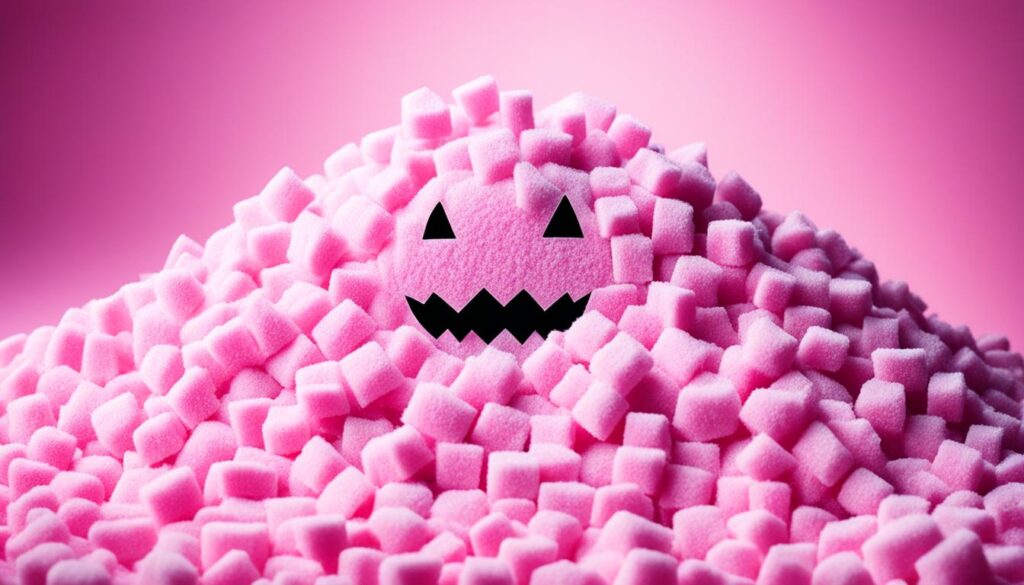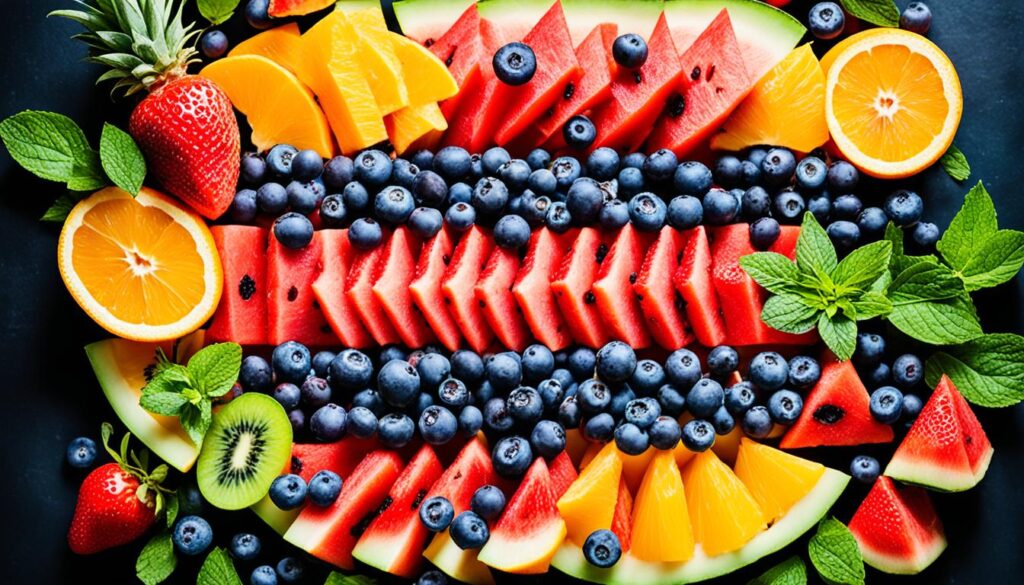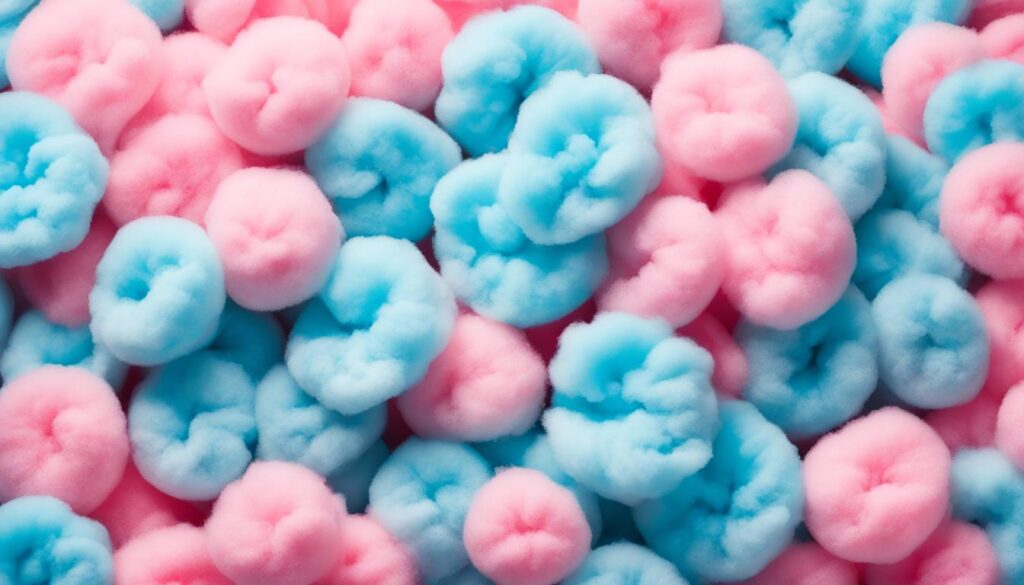Is cotton candy bad for you? Health Facts Revealed. This question often arises when we indulge in the fluffy, sugary treat that’s a staple at fairs and carnivals. While cotton candy is undeniably delicious, its health impact is worth examining. In this post, we’ll explore the nutritional aspects of cotton candy, discuss its effects on your body, and provide insights into how you can enjoy it responsibly without compromising your well-being.
Cotton candy is a favorite at carnivals for kids and adults alike. But, its sugary nature raises health concerns. We’ll look into its sugar and calorie content, health risks, and offer healthier options for sweet craving.
If you’re a coffee lover looking for a fun and whimsical twist on your daily brew, cotton candy coffee is a must-try! This unique drink combines the rich, bold flavors of coffee with the light, sugary sweetness of cotton candy, creating a one-of-a-kind experience. Whether you enjoy experimenting with coffee recipes or want to impress guests with a visually stunning drink, cotton candy coffee brings a delightful mix of nostalgia and indulgence to every cup.
What Is Cotton Candy Coffee?
Cotton candy coffee is exactly what it sounds like—a delicious blend of coffee and cotton candy. Typically, a fluffy cloud of cotton candy is placed over a cup, and as the hot coffee is poured over it, the candy melts into the drink, adding a subtle sweetness and a touch of magic. The result is a perfectly balanced coffee with a mild caramelized sugar flavor, making it a great alternative for those who enjoy sweetened coffee but want to try something new.
How to Make Cotton Candy Coffee at Home
Making cotton candy coffee at home is surprisingly simple! All you need is:
- Freshly brewed coffee (espresso or strong black coffee works best)
- Cotton candy (any flavor, but classic pink or blue adds to the aesthetic)
- Milk or creamer (optional, for a creamier texture)
To prepare, place a generous ball of cotton candy on top of your cup, then slowly pour hot coffee over it. Watch as the cotton candy melts and infuses the coffee with its sugary goodness. You can also froth some milk and add it on top for an extra creamy finish.
Key Takeaways
- Cotton candy is mostly sugar, which can harm teeth, cause diabetes, and lead to obesity if eaten too much.
- A single serving of cotton candy has up to 30 grams of sugar, like 7.5 teaspoons.
- Eating cotton candy often can cause energy drops and may lead to weight gain and health problems later on.
- Instead of cotton candy, try fresh fruit, low-fat frozen yogurt, or homemade popcorn with natural sweeteners.
- Enjoy cotton candy in moderation as part of a balanced diet.
What is Cotton Candy?
Cotton candy is a sweet treat that has made many happy over the years. It looks like fluffy clouds and tastes sweet. Cotton candy is a favorite at fairs and festivals everywhere.
The Sweet and Fluffy Treat
Making cotton candy is amazing. They heat sugar and spin it fast. This turns sugar into thin strands that feel like air.
These strands are then put together and given to you. You can get it on a stick or in a cone. It’s like eating a cloud.
The History and Popularity of Cotton Candy
- The first machine for making cotton candy was invented in 1897.
- Now, cotton candy is a hit at carnivals and outdoor events. It’s loved by kids and adults.
- There are many flavors of cotton candy today. Everyone can find one they like.
Cotton candy is a treat that makes people happy. It brings back happy memories and makes new ones. It’s a sweet surprise for everyone.
The Ingredients in Cotton Candy
When you think of cotton candy, sugar is the first thing that pops into your head. And you’re right, sugar is the main ingredient. But cotton candy is more than just sugar. It has other sweet and fluffy parts too.
Sugar: The Main Ingredient
Cotton candy is mostly made from granulated sugar or powdered sugar. This sweet stuff gets spun into fine strands. These strands make the cotton candy fluffy and sweet.
Food Coloring and Flavorings
Along with sugar, cotton candy also has food coloring and artificial flavorings. These add the bright colors and tasty flavors. You can find everything from classic pink and blue to grape and cherry flavors.
The mix of cotton candy ingredients like sugar, food coloring, and flavorings makes it so tempting. This mix is what makes cotton candy a favorite treat.

The Sugar Content of Cotton Candy
Cotton candy is very high in sugar. A small serving can have over 30 grams of sugar. This means a treat that looks harmless can be very sweet and bad for your health.
The sugar in cotton candy is mostly refined white sugar. It doesn’t have much nutritional value. Unlike sugars in fruits and veggies, cotton candy sugar makes your blood sugar go up fast. This can lead to energy crashes and other bad effects.
| Sugar Content in Cotton Candy | Amount |
|---|---|
| Typical Serving Size | 1 oz (28g) |
| Total Sugar | 26g |
| Percent of Daily Recommended Sugar Intake | 52% |
The sugar content in cotton candy is a big reason to think about its health effects. Knowing how much sugar is in it helps you make better choices about eating it and finding other options.
“A single serving of cotton candy can contain more sugar than what’s recommended for an entire day.”
Calories in Cotton Candy
The calorie count in cotton candy is not sweet news. This fluffy, sugary treat has a lot of calories. A typical serving can have 70 to 150 calories, depending on size and recipe.
How Many Calories are in Cotton Candy?
Sugar is the main reason cotton candy has so many calories. A single serving can have 20-30 grams of sugar. That’s a lot of sugar for your body.
This sugar can lead to weight gain, tooth decay, and other health issues if eaten too much.
A medium-sized bag of cotton candy from a carnival or fair has up to 150 calories. That’s like eating nearly 4 tablespoons of sugar at once! Cotton candy is often seen as an “empty calorie” treat, offering no nutritional value.
For those watching their weight or eating healthy, the calories in cotton candy are a worry. It’s key to watch how much you eat and enjoy it in moderation. This way, it can be part of a balanced life.
Cotton Candy and Tooth Decay
Cotton candy is sweet and fluffy, but it’s bad for your teeth. It has a lot of sugar, which can cause cavities and tooth decay.
The Impact of Sugar on Dental Health
When you eat cotton candy, the sugar feeds the bad bacteria in your mouth. These bacteria make acids that can hurt your teeth. This can lead to cavities, which are painful and expensive to fix.
The sugar also changes your mouth’s pH balance. This makes it easier for bacteria to grow and make more acids. This can hurt your teeth for a long time and cost a lot of money to fix.

“Consuming too much sugar, like that found in cotton candy, can wreak havoc on your teeth, increasing the risk of cavities and other oral health problems.”
To keep your teeth healthy, watch how much cotton candy you eat. Brush, floss, and see your dentist regularly to stay on top of your oral health.
Is Cotton Candy Bad for You?
Cotton candy is a beloved sugary delight enjoyed by many. But, its high sugar and lack of nutrients can be a concern. This is especially true if you eat too much of it.
The main worry with is cotton candy bad for you is its sugar. It’s mostly made of refined sugar. Eating too much sugar can harm your health. It can lead to tooth decay, Weight gain and an increased risk of diabetes.
Also, cotton candy often has artificial colors and flavors. These can be bad for your health. They might not be good for people who want a healthier snack.
The Potential Drawbacks of Cotton Candy
- High Sugar Content: Cotton candy has a lot of refined sugar. This can cause dental problems, weight gain, and increase the risk of chronic diseases like diabetes.
- Artificial Additives: The food dyes and flavors in cotton candy may not be good for your health. They are not the best choice for a nutritious snack.
- Lack of Nutritional Value: Cotton candy doesn’t give you any important nutrients, vitamins, or minerals. It’s just empty calories.
Having a little bit of cotton candy now and then is okay. But, be aware of its downsides. It should be a rare treat, not a regular snack. If you’re worried about cotton candy’s effects on your health, talk to a doctor or a dietitian for advice.
“Moderation is the key when it comes to enjoying cotton candy. It’s a treat, not a dietary staple.”
Cotton Candy and Diabetes
Eating a lot of sugar-rich foods like cotton candy is a big worry for people with diabetes or at risk of getting it. Cotton candy’s high sugar can make insulin resistance worse and raise the chance of type 2 diabetes.
The Connection Between Sugar and Diabetes
Eating cotton candy can make your blood sugar go up fast. This can make it hard for your body to make insulin. Over time, this can lead to insulin resistance, which is a step towards type 2 diabetes. Eating too many sugary snacks can also make you gain weight, which is a big risk for diabetes.
A study in the Journal of the American Medical Association found that eating a lot of added sugar, like in cotton candy, ups the risk of type 2 diabetes. Those who ate more sugar had a higher chance of getting diabetes.
| Impact of Sugar Consumption on Diabetes Risk | Percentage Increase in Diabetes Risk |
|---|---|
| Every 12 ounces of sugary drink consumed per day | 25% increase |
| Every 150 calories of added sugar consumed per day | 11% increase |
Watch how much sugar you eat, especially if you have diabetes or might get it. Cutting down on high-sugar foods like cotton candy can help keep your blood sugar in check. This can also lower your risk of serious health problems later on.

Cotton Candy and Obesity
Cotton candy might look like a fun snack, but it’s high in sugar and calories. Eating too much can lead to weight gain and obesity. Its fluffy texture and sweet taste make it hard to stop eating, causing an unhealthy calorie build-up.
Studies link eating cotton candy often to weight problems. These include obesity, metabolic issues, and heart problems. The sugar in cotton candy makes blood sugar go up fast. This can cause insulin resistance and fat storage over time.
| Nutritional Comparison | Cotton Candy | Apple |
|---|---|---|
| Calories (per 100g) | 378 | 52 |
| Sugar (per 100g) | 94g | 10g |
| Fiber (per 100g) | 0g | 2.4g |
The table shows how cotton candy and an apple differ in nutrition. Cotton candy has a lot of sugar and not much good stuff. Eating too much can lead to weight gain and obesity.
“Consuming cotton candy in moderation is fine, but it’s important to be mindful of the potential long-term effects on your health if it becomes a regular part of your diet.”
To stay healthy and avoid obesity, eat cotton candy in small amounts. Choose foods that are better for you and watch how much you eat. This way, you can enjoy cotton candy without the bad effects.
The Side Effects of Eating Too Much Cotton Candy
Eating a lot of cotton candy might seem fun, but it can harm your health. It has a lot of sugar, which can cause problems now and later. Knowing the risks helps you make better choices for your health.
Short-Term Consequences
Cotton candy’s sugar can make your blood sugar spike and then drop. This can make you feel tired, have headaches, and be easily annoyed. Eating too much sugar can also upset your digestive system. You might get stomach pain, feel bloated, or even have diarrhea.
Long-Term Consequences
Eating cotton candy often can harm your health over time. The high sugar content can lead to tooth decay and gum disease. This increases the chance of getting cavities and other mouth problems. Also, the empty calories in cotton candy can make you gain weight. This raises the risk of becoming obese and getting type 2 diabetes.
It’s important to think about the problems with cotton candy and its side effects. Enjoy it in moderation. Looking for healthier options can help you still enjoy sweets without harming your health.

Healthier Alternatives to Cotton Candy
If you’re looking for a sweet treat but don’t want the sugar and calories of cotton candy, there are better choices. These options let you enjoy sweets without harming your health.
Guilt-Free Snack Options
Check out these healthy alternatives to cotton candy for a nutritious sweet snack:
- Fresh Fruit: Enjoy the natural sweetness of fresh berries, sliced apples, or grapes. These are full of vitamins, minerals, and fiber to help your body.
- Homemade Frozen Treats: Mix your favorite fruits with a bit of honey or Greek yogurt for refreshing, low-sugar popsicles or smoothies.
- Low-Sugar Candies: Find candies sweetened with natural options like stevia or erythritol. They satisfy your sweet cravings without the bad effects of refined sugar.
- Dark Chocolate: A small amount of high-quality dark chocolate gives you a rich taste with less sugar and more antioxidants than regular candies.
- Roasted Nuts: For a crunchy, sweet snack, try lightly seasoned and roasted nuts like almonds, cashews, or pecans.
With these healthy alternatives to cotton candy, you can satisfy your sweet cravings while keeping your health in mind.

Why Shouldn’t We Eat Cotton Candy?
Cotton candy is a fluffy, sugary treat many of us loved as kids. But, it’s not the healthiest choice for eating often. There are good reasons to think twice before eating this sweet treat.
Sugar Overload
Cotton candy is mostly sugar. A small serving can have up to 15 grams of sugar, which is like 4 teaspoons. This can make your blood sugar go up fast. It might lead to weight gain, diabetes, and tooth decay.
Calorie Concerns
Cotton candy is also high in calories. A single serving can have up to 100 calories. Eating it often can make you gain weight and increase the risk of obesity, especially in kids.
Dental Health Risks
The sugar in cotton candy can harm your teeth. It can make harmful bacteria in your mouth, causing tooth decay and other dental problems. It’s important to eat cotton candy only in small amounts to keep your teeth healthy.
In conclusion, cotton candy may be tempting, but we should be careful. Eating it too much can be bad for our health. Choosing healthier snacks is better for our well-being.
Is Cotton Candy Healthier Than Soda?
Many people wonder if cotton candy or soda is the better choice. Both are high in sugar, but they are different in some ways. Let’s look at what makes them different.
Comparing the Two Sugary Treats
Soda is often seen as the less healthy option. A 12-ounce can has about 39 grams of sugar, or 9.75 teaspoons. Cotton candy, on the other hand, has around 28 grams of sugar, or 7 teaspoons.
Soda doesn’t have much nutritional value. Cotton candy has some carbs, but both are mostly empty calories. They give energy but don’t have important vitamins or minerals.
| Nutritional Comparison | Cotton Candy | Soda |
|---|---|---|
| Serving Size | 30 grams | 12 oz (355 mL) |
| Calories | 118 | 139 |
| Sugar | 28 grams | 39 grams |
| Nutritional Value | Carbohydrates | None |
Cotton candy has fewer calories and sugar than soda, but both are still treats. They should be eaten in small amounts. It’s best to choose healthier snacks when you can.
“Moderation is key when it comes to indulging in sugary treats like cotton candy and soda. Neither should be considered a health food, but understanding the nutritional differences can help you make more informed choices.”
The Problems with Cotton Candy
Cotton candy might look fun and harmless, but it has big issues. It’s high in sugar, has no real nutrition, and can cause health problems.
Addressing the Concerns
Cotton candy has a lot of sugar. Just one serving can have up to 15 grams, or about 4 teaspoons. This can make your blood sugar go up fast. It might lead to cavities, weight gain, and type 2 diabetes if eaten too much.
This treat has no nutrients, vitamins, or fiber. It gives you empty calories that don’t help your health. Eating it too often can make you miss out on better foods, leading to health issues.
Also, cotton candy often has artificial colors and flavors. These can make kids hyper, cause bad behavior, and might even be cancer-causing. Kids are especially at risk from these harmful additives.
Even though cotton candy is tempting, we need to know the risks. Making smart choices lets us enjoy it but stay healthy. It’s important to eat a balanced diet for good health.
Cotton Candy Nutrition: The Truth Revealed
Cotton candy is mostly just sugar with hardly any good stuff in it. It’s high in sugar and calories, making it not great for your health.
Let’s dive into the nutrition facts of this sweet carnival treat:
| Nutrient | Amount per Serving |
|---|---|
| Calories | 100 calories |
| Total Carbohydrates | 25 grams |
| Sugars | 25 grams |
| Protein | 0 grams |
| Fat | 0 grams |
| Vitamins and Minerals | Negligible |
The table clearly shows that cotton candy is mostly sugar. It has 25 grams of sugar per serving. This can lead to health problems like tooth decay, diabetes, and obesity.
Even though cotton candy is fun and tasty, it’s important to eat it only sometimes. Try eating fresh fruit or making your own frozen treats instead. These options are healthier and still let you enjoy something sweet.
Why You Should Try It
Cotton candy coffee isn’t just about taste—it’s an experience. The visual appeal of watching the cotton candy dissolve adds an element of fun, making it perfect for social media-worthy moments. It’s also a great way to switch up your regular coffee routine without using artificial syrups or too much processed sugar. Plus, you can experiment with different cotton candy flavors, like vanilla, strawberry, or blueberry, to customize your drink.
Is Cotton Candy Coffee Too Sweet?
Surprisingly, cotton candy coffee is not overly sweet. Since cotton candy is made from spun sugar, it dissolves quickly and adds a mild sweetness rather than an overpowering sugary taste. The key is to use a strong coffee base to balance the flavors. If you prefer a bolder taste, you can adjust the sweetness by using a smaller amount of cotton candy or opting for a darker roast coffee.
Final Thoughts
If you love trying unique coffee drinks or simply want to bring a little childhood nostalgia into your morning routine, cotton candy coffee is the perfect treat. It’s easy to make, visually stunning, and offers a sweet yet balanced flavor that’s unlike any other coffee experience. Whether you’re making it for yourself or serving it at a brunch gathering, this dreamy drink is sure to impress. Give it a try and enjoy a sweet twist on your daily brew!
Conclusion
Cotton candy is a sweet treat that brings back happy memories. But, it’s important to know about its high sugar and calorie content. These can lead to health problems like tooth decay, diabetes, and obesity.
The article has shown us the risks of eating too much cotton candy. It’s key to enjoy it in small amounts. This way, you can still enjoy its sweet taste without harming your health.
Deciding to eat cotton candy is up to you and your health goals. By making smart choices, you can enjoy treats and stay healthy. It’s all about finding a balance.







